Showing Spotlights 977 - 984 of 2786 in category All (newest first):
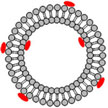 Researchers have demonstrated a system that provides photo-triggered release of local anesthetics in a manner that could be adjusted by varying the irradiance and the duration of irradiation. From the clinical point of view, this is important in that it demonstrates a method by which patients would be able to take control of relatively local pain, being able to deliver local analgesia on demand, for the duration and with the intensity desired.
Researchers have demonstrated a system that provides photo-triggered release of local anesthetics in a manner that could be adjusted by varying the irradiance and the duration of irradiation. From the clinical point of view, this is important in that it demonstrates a method by which patients would be able to take control of relatively local pain, being able to deliver local analgesia on demand, for the duration and with the intensity desired.
Dec 17th, 2015
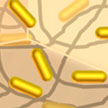 So far, most of the applications of plasmonic nanostructures rely on solid two-dimensional substrates such as silicon, glass, plastic, or paper. Such substrates offer rather limited accessible surface area, thus severely limiting the volumetric density of the nanostructures. Researchers now have developed a 3D material with a high density of plasmonic nanostructures that are completely accessible. The SERS and photothermal performance of this novel 3D material is superior compared to that of conventional 2D plasmonic surfaces.
So far, most of the applications of plasmonic nanostructures rely on solid two-dimensional substrates such as silicon, glass, plastic, or paper. Such substrates offer rather limited accessible surface area, thus severely limiting the volumetric density of the nanostructures. Researchers now have developed a 3D material with a high density of plasmonic nanostructures that are completely accessible. The SERS and photothermal performance of this novel 3D material is superior compared to that of conventional 2D plasmonic surfaces.
Dec 16th, 2015
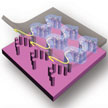 One of the challenges of fabricating flexible electronics has been the trade-off between a material's high flexibility and adaptability, and its conductivity. Exploring feasible methods for guiding conducting or semiconducting nanomaterials into elastomeric matrices will be key to further progress in this area. A promising approach has just been reported by scientists, who have developed a facile printing strategy to assemble silver nanoparticles into micro- and nano-curve structures via a pillar-patterned silicon template. The curves with various tortuosity morphologies have differential resistive strain sensitivity, which can be integrated into a multi-analysis flexible sensor to perform complex-recognition of human facial expressions.
One of the challenges of fabricating flexible electronics has been the trade-off between a material's high flexibility and adaptability, and its conductivity. Exploring feasible methods for guiding conducting or semiconducting nanomaterials into elastomeric matrices will be key to further progress in this area. A promising approach has just been reported by scientists, who have developed a facile printing strategy to assemble silver nanoparticles into micro- and nano-curve structures via a pillar-patterned silicon template. The curves with various tortuosity morphologies have differential resistive strain sensitivity, which can be integrated into a multi-analysis flexible sensor to perform complex-recognition of human facial expressions.
Dec 15th, 2015
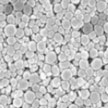 Researchers have approached the preparation of artificial analogs of nacre by using various methods and the resulting materials have captured some of the characteristics of the natural composite - but so far never have fully replicated it. Now, researchers have reported the first successful attempt to mimic the structure of nacre while maintaining the same characteristic geometry, aspect ratio and phase proportions. They used 10-20 nm thick layered double hydroxide (LDH) platelets with an aspect ratio similar to the aragonite platelets in nacre and 'glued' them together with a simple organic 'mortar' (PSS).
Researchers have approached the preparation of artificial analogs of nacre by using various methods and the resulting materials have captured some of the characteristics of the natural composite - but so far never have fully replicated it. Now, researchers have reported the first successful attempt to mimic the structure of nacre while maintaining the same characteristic geometry, aspect ratio and phase proportions. They used 10-20 nm thick layered double hydroxide (LDH) platelets with an aspect ratio similar to the aragonite platelets in nacre and 'glued' them together with a simple organic 'mortar' (PSS).
Dec 14th, 2015
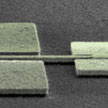 Researchers have successfully used amorphous metal tungsten nitride to demonstrate nanoelectromechanical switches that are capable of sub-1 volt operation. In the past, attaining sub-1 volt operation at dynamic state and faster switching was extremely difficult. These efforts required the use of very expensive lithography systems to pattern nanoscale free-hanging switches. This is the first ever demonstration of a 3-terminal NEM switch.
Researchers have successfully used amorphous metal tungsten nitride to demonstrate nanoelectromechanical switches that are capable of sub-1 volt operation. In the past, attaining sub-1 volt operation at dynamic state and faster switching was extremely difficult. These efforts required the use of very expensive lithography systems to pattern nanoscale free-hanging switches. This is the first ever demonstration of a 3-terminal NEM switch.
Dec 8th, 2015
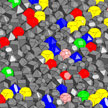 Applying multivariate statistical techniques to the study of nanocarbons, researchers have presented a methodology to identify nanoparticles with unique combinations of features and, in general, a feasible way of in silico characterization of intractable nanomaterial spaces. These analyses are based on structural features characterizing geometry, interatomic distances, bond angle, surface-to-volume ratio, carbon-to-hydrogen ratio, and hybridization fraction; many of which can be preselected without undertaking expensive electronic structure simulations.
Applying multivariate statistical techniques to the study of nanocarbons, researchers have presented a methodology to identify nanoparticles with unique combinations of features and, in general, a feasible way of in silico characterization of intractable nanomaterial spaces. These analyses are based on structural features characterizing geometry, interatomic distances, bond angle, surface-to-volume ratio, carbon-to-hydrogen ratio, and hybridization fraction; many of which can be preselected without undertaking expensive electronic structure simulations.
Nov 30th, 2015
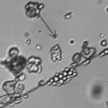 While 'conventional' water contaminants can be cleaned up by state-of-the-art technologies with filtration and condensation processes, this is not the case for nanoscale pollutants. Researchers have demonstrated that water contaminated with nanomaterials can be cleaned up by a 'hand shaking' approach that can be performed even in a kitchen. This simple technique can be used for many one-dimensional and two-dimensional nanomaterials including nanotubes, nanowires, graphene, and nanosheets.
While 'conventional' water contaminants can be cleaned up by state-of-the-art technologies with filtration and condensation processes, this is not the case for nanoscale pollutants. Researchers have demonstrated that water contaminated with nanomaterials can be cleaned up by a 'hand shaking' approach that can be performed even in a kitchen. This simple technique can be used for many one-dimensional and two-dimensional nanomaterials including nanotubes, nanowires, graphene, and nanosheets.
Nov 25th, 2015
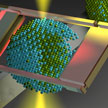 Catalytic nanoparticles play a crucial role in accelerating chemical reactions by offering their active sites and surfaces. Fine-tuning their surface structure during synthesis and phase transformations can enhance their catalytic activity and durability by manifolds. However, control and feedback on the synthesis/transformation studies demand characterization techniques that can provide structural and compositional information on the atomic level.
Catalytic nanoparticles play a crucial role in accelerating chemical reactions by offering their active sites and surfaces. Fine-tuning their surface structure during synthesis and phase transformations can enhance their catalytic activity and durability by manifolds. However, control and feedback on the synthesis/transformation studies demand characterization techniques that can provide structural and compositional information on the atomic level.
Nov 24th, 2015
 Researchers have demonstrated a system that provides photo-triggered release of local anesthetics in a manner that could be adjusted by varying the irradiance and the duration of irradiation. From the clinical point of view, this is important in that it demonstrates a method by which patients would be able to take control of relatively local pain, being able to deliver local analgesia on demand, for the duration and with the intensity desired.
Researchers have demonstrated a system that provides photo-triggered release of local anesthetics in a manner that could be adjusted by varying the irradiance and the duration of irradiation. From the clinical point of view, this is important in that it demonstrates a method by which patients would be able to take control of relatively local pain, being able to deliver local analgesia on demand, for the duration and with the intensity desired.
 Subscribe to our Nanotechnology Spotlight feed
Subscribe to our Nanotechnology Spotlight feed





